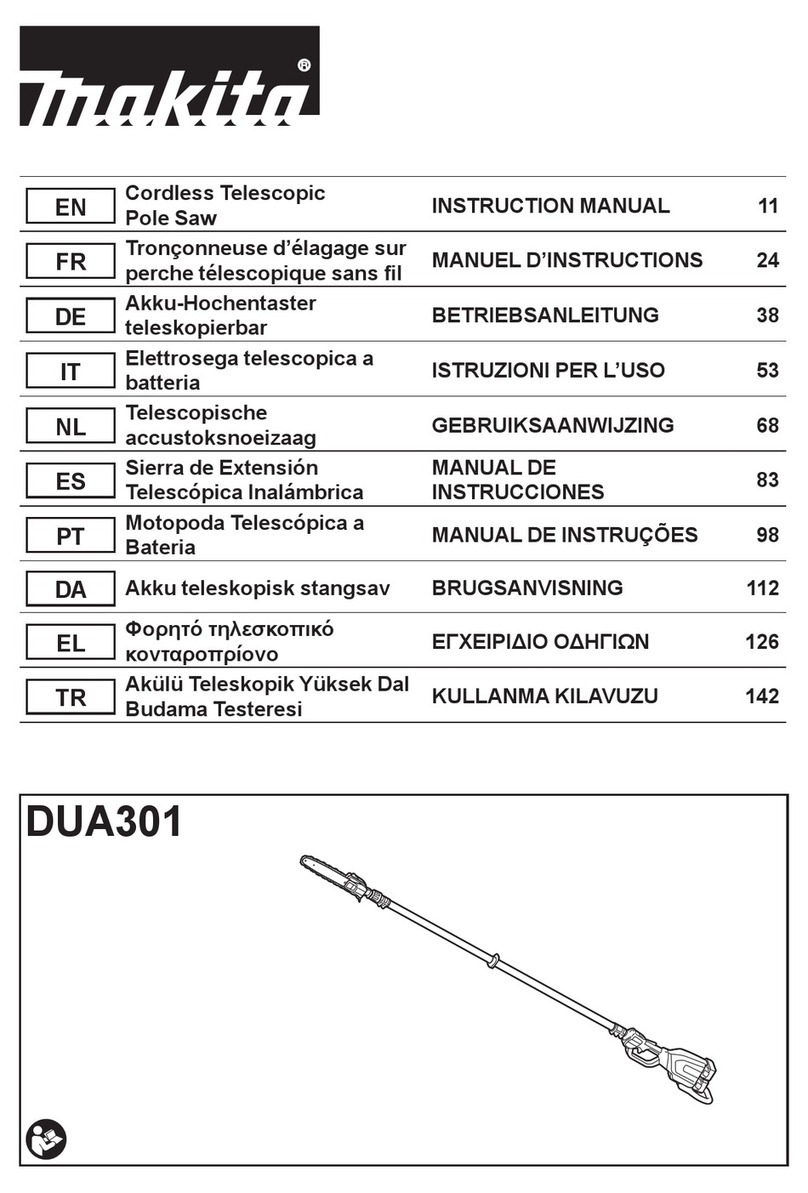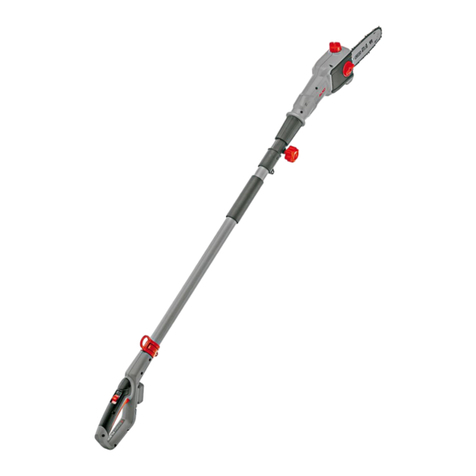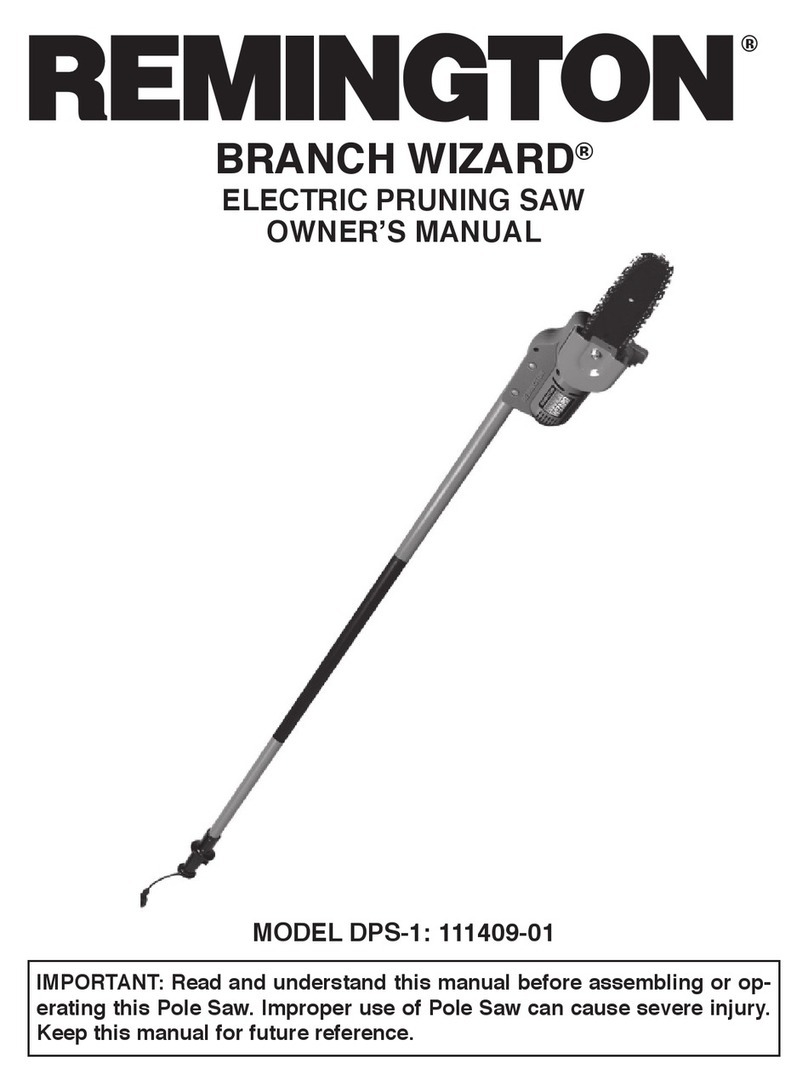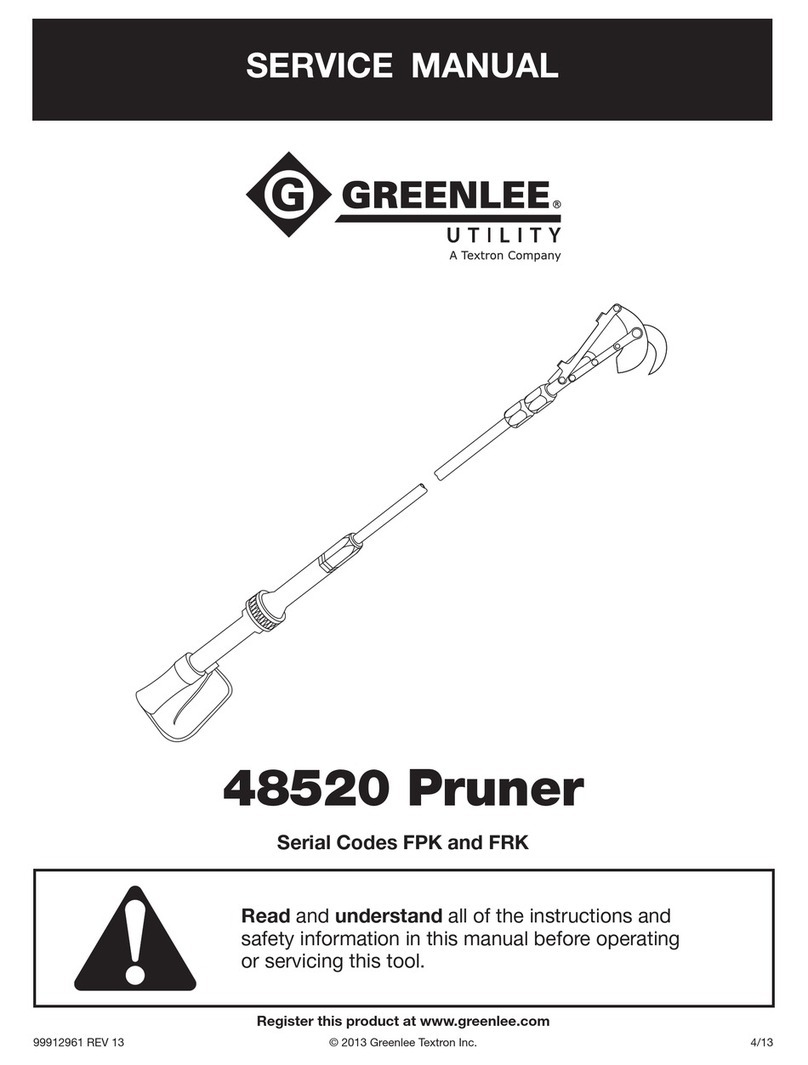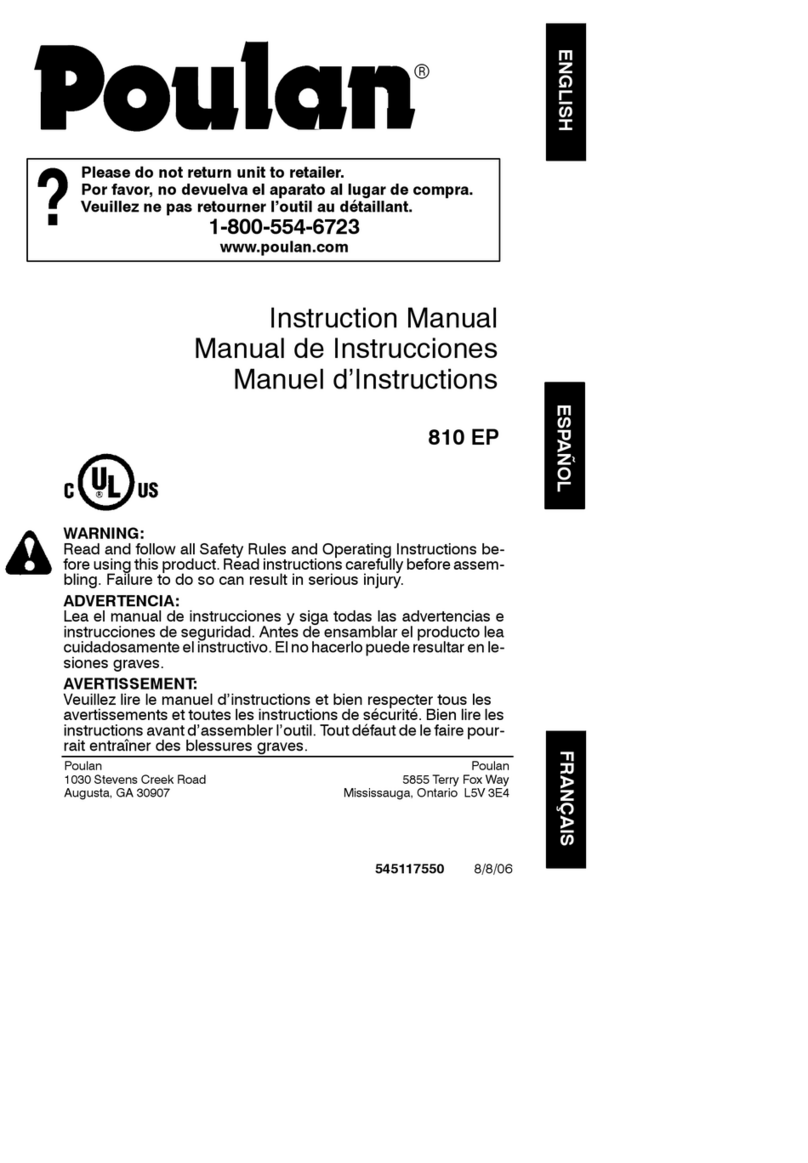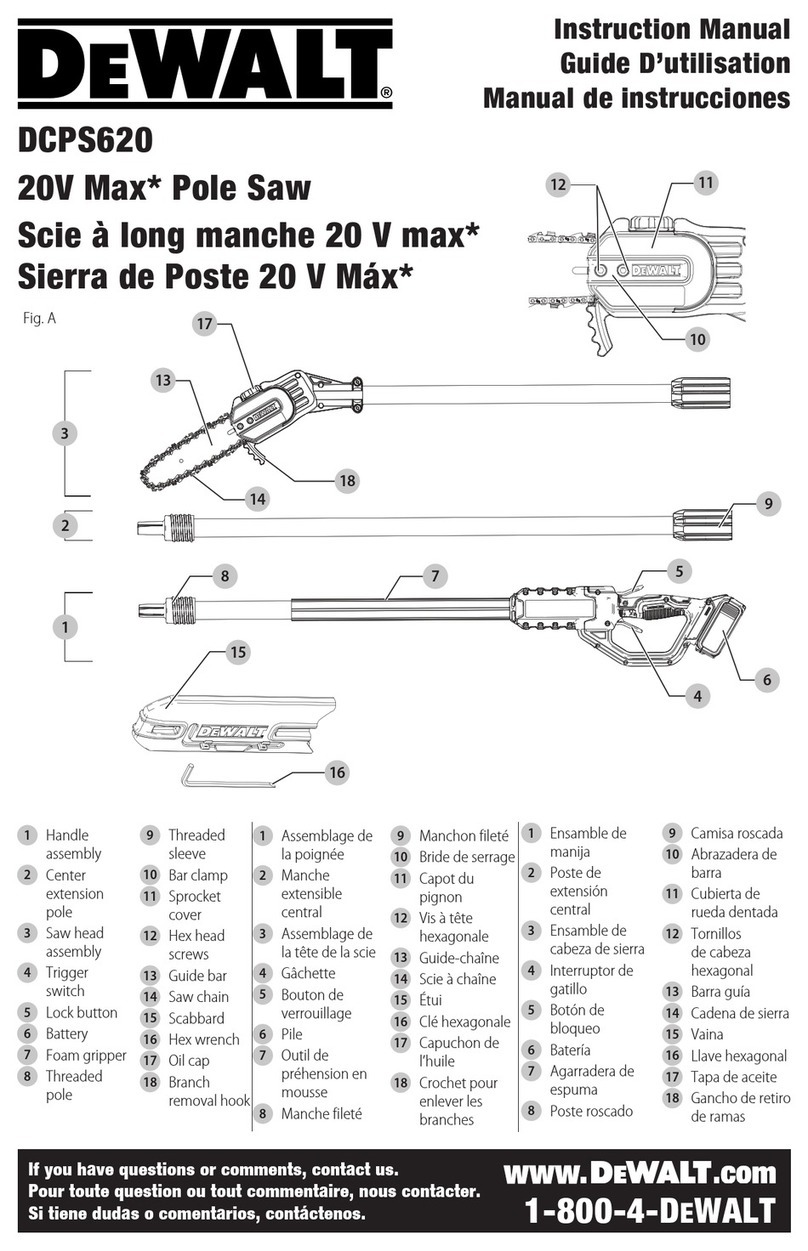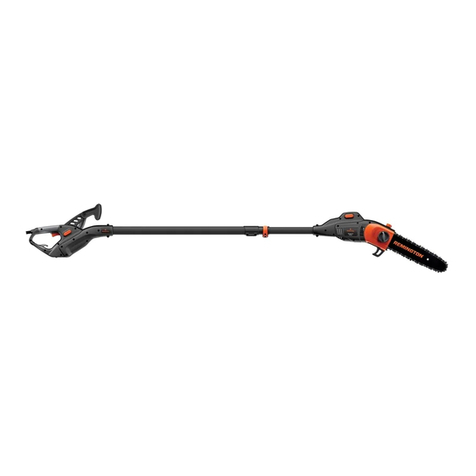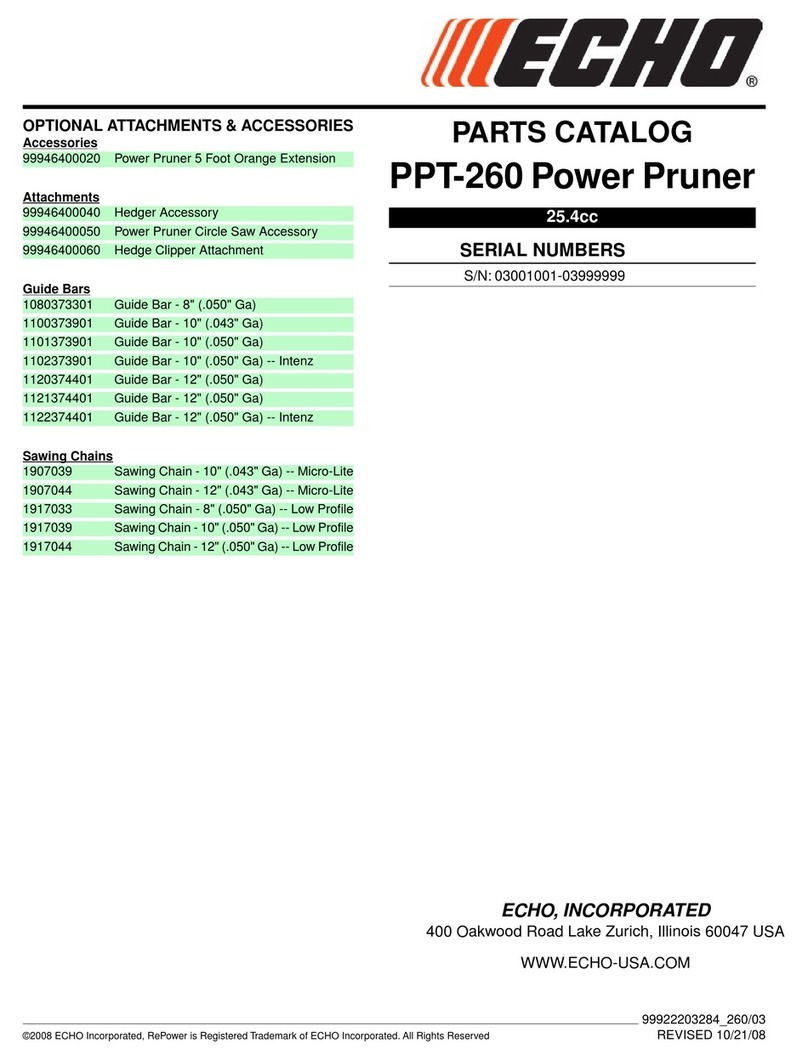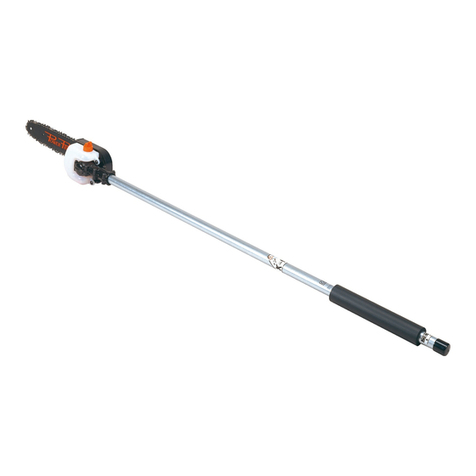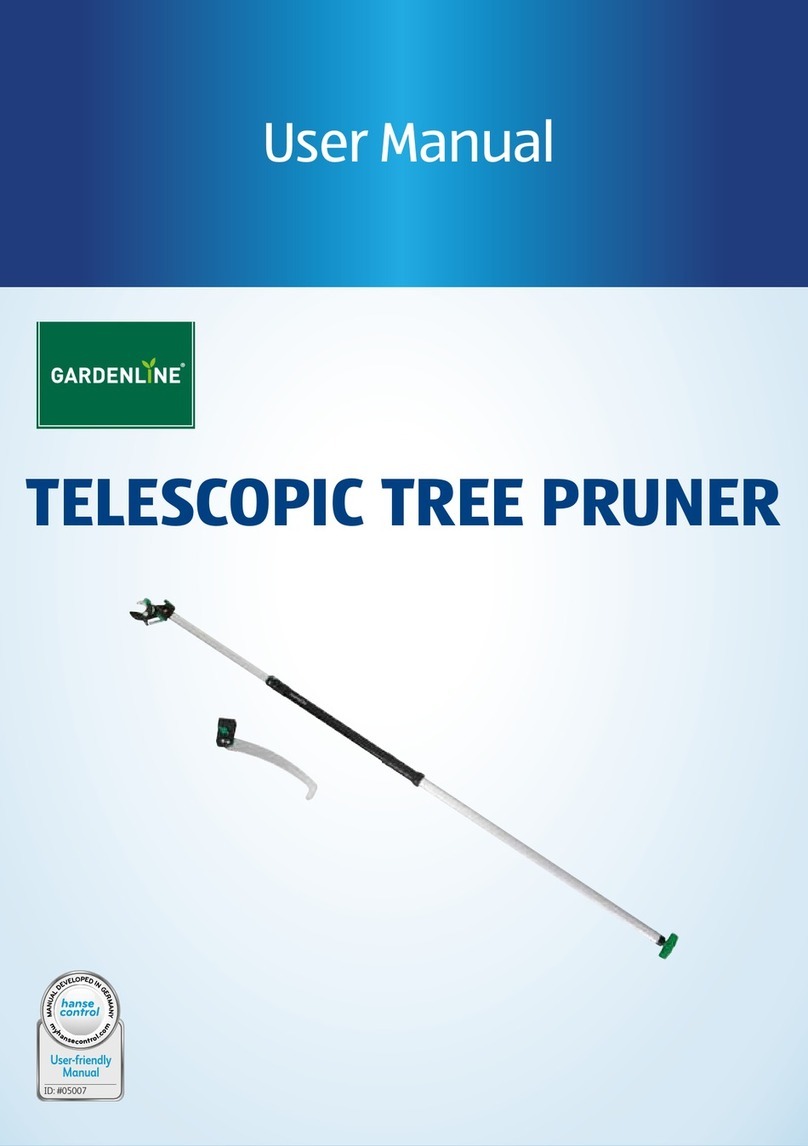
Greenlee Textron / Subsidiary of Textron Inc. 94455 Boeing Dr., Rockford, IL 61109-2988 815/397-7070
Orchard and ShadeTree Pruner
Operation
Pre-Operation (see Figure 1)
1. Stop the power source.
2. Inspect the cutter blade. A build-up of metal (wire
edge) will form on new blades as it seats across the
face of the hook. This build-up of metal (wire edge)
must be removed several times, until the blade
seats itself to the hook. See Service Section -
Dressing the Cutter Blade and Hook. Failure to
remove the wire edge will cause the edge of the
blade to roll over, chip, and/or crack.
Several times a day the blade and hook must be
dressed with a pocket whetstone. This keeps the
cutting edges sharp and prevents them from rolling
and chipping. See Service Section - Dressing the
Cutter Blade and Hook (page 11).
3. Connect the hydraulic hoses from the power source
to the tool. See Tool/Hose Connections.
4. It is recommended that the power source be al-
lowed to run (idle) for a few minutes to warm the
hydraulic reservoir fluid. Actuating the tool intermit-
tently will reduce the time required to warm the fluid
to an efficient operating temperature.
Operation (see Figure 1)
1. Grasp the extension tube (3) with one hand and
trigger handle (4) with your opposite hand.
2. Position the inner curve of the pruner cutter hook (5)
against the limb to be cut.
3. To actuate the pruner, depress (squeeze) the trigger
(6). The cutter blade (7) will slice through the limb
and come to a stop.
4. To return the cutter blade (7) to the starting position,
release the trigger (6).
5. Lay the tool on a flat surface when not in use.
6. When the tool is not in use, stop the power source to
reduce heat and wear on the tool components.
Electrical Shock Hazard:
This is not an insulated tool.
Do not use near electrical lines.
Contact with live circuits can result
in severe injury or death.
•Inspect the cutter blade every operating day.
Remove and destroy cutter blade if cracks,
chips, or gouges are evident. A damaged blade
can break and strike nearby personnel.
•Do not change accessories, inspect, adjust or
clean tool when it is connected to a power
source. Accidental start-up can result in serious
injury.
•Maintain a firm grip on tool, using both hands at
all times. Serious injury can result if the operator
does not control the tool.
Failure to observe these warnings could result in
severe injury or death.
Keep hands and fingers away from
closing blades.
•Use this tool for the manufacturer’s intended
purpose only. Use other than that which is
described in this manual can result in injury or
property damage.
•Inspect hydraulic hoses and couplings every
operating day. Repair or replace if leakage,
cracking, wear, or damage is evident.
Damaged hoses or couplings can fail resulting
in injury or property damage.
•Make sure all bystanders are clear of the work
area when handling, starting and operating the
tool. Nearby personnel can be injured by flying
or falling debris or by flying parts in the event
of a tool malfunction.



